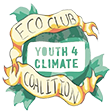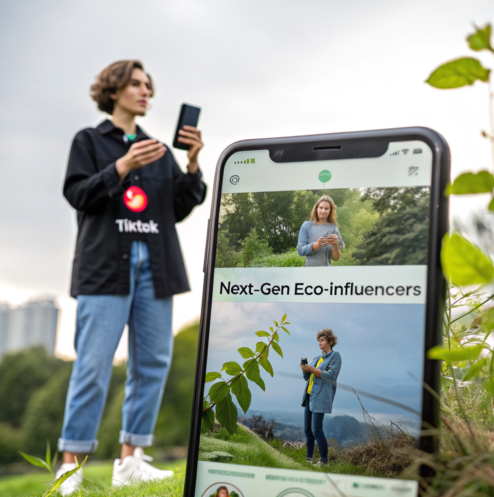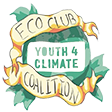From Science Reports to Viral Shorts: Climate Talk Gets a Makeover

The climate conversation in 2025 isn’t happening in stuffy conference rooms—it’s happening on your phone. Young influencers are turning platforms like TikTok, Instagram Reels, and YouTube Shorts into unexpected battlegrounds in the fight against global warming. Through short, engaging videos, these creators are demystifying complex topics like carbon footprints, net-zero targets, greenwashing, and even the Paris Agreement—all within the span of 60 seconds.
It’s fast, it’s accessible, and surprisingly, it’s working.
The 60-Second Format That’s Changing Minds

Education Without the Lecture
Take @climate.lexi, a young activist from Canada, whose video on the “hidden emissions from video streaming” clocked an impressive 2.4 million views. Her content dives into everyday climate decisions—like choosing packaging or clothing—and shows how these small choices add up.
Meanwhile, the Indian collective @greenpulse.in crafts easy-to-understand videos using simple animations and infographics. Their clips highlight regional climate risks and adaptation strategies, turning dense data into stories anyone can relate to.
Real Voices, Real Lives
One of the reasons this content hits home is that it’s filmed in real settings—bedrooms, city streets, local markets. It’s not polished or staged. That rawness makes climate issues feel personal rather than abstract.
It’s not about preaching from a pedestal. It’s about saying: “Hey, this is what I’m doing, and you can do it too.”
Why This Approach Actually Works
The Barrier to Entry Is Gone
Forget jargon and 200-page reports. Climate videos now show supply chains, pollution sources, or energy stats with visuals, voiceovers, and fast edits. Teens and young adults, even those with no prior knowledge of environmental science, can understand and engage.
Challenges Turn Learning Into Action
Interactive trends like #ZeroWasteWeek and #EcoMythBusted turn climate awareness into participatory fun. Viewers don’t just watch—they sort trash, track energy usage, and share their own solutions. The result? Real behavior change, not just passive scrolling.
From Likes to Lifestyle Changes
This isn’t just a trend—it’s driving impact. According to Digital Climate Watch, a research platform tracking digital climate behavior, over 60% of TikTok users aged 15–24 reported changing at least one daily habit after watching videos on sustainable consumption.
A standout example is the #FoodPrint2025 campaign, launched by eco-creators in partnership with the Food and Agriculture Organization (FAO). In just 3 weeks, the hashtag racked up:
| Metric | Result |
|---|---|
| Total Views | 18.7 million |
| App Downloads (for carbon tracking) | ~320,000 users |
| Region Reach | Global (but led by youth hubs in Asia, EU) |
The Flip Side — Challenges in the Age of Viral Climate Content
When Speed Meets Oversimplification
For all the good these platforms have done, there’s a growing concern: accuracy. The very things that make TikTok content viral—simplicity, speed, and visuals—can also lead to misinformation or extreme generalizations.
Some creators, in an attempt to make content catchy, accidentally mislead their audiences. Climate science is nuanced, and while 60-second videos are powerful, they often leave no room for complexity or context.
That’s why major environmental organizations like UNEP and IPCC are stepping in. They’re collaborating with popular eco-creators, offering them verified data sets, expert access, and even co-branded toolkits to keep facts front and center.
The Influence Dilemma
Another issue is accountability. Eco-influencers are shaping public discourse—but who checks them? Unlike journalists or scientists, many operate without editorial oversight. The risk of mixing activism with branding, sponsorships, or unverified claims grows with popularity.
Still, most leading creators are aware of their impact and are working to professionalize their content. Many now cite sources, use expert interviews, or partner with NGOs for transparency.
What’s Next for Eco-Influencing in 2025 and Beyond?
Education, Mobilization, and Policy Pressure
The role of social media in climate action is evolving. It’s no longer just about awareness—it’s about mobilizing communities and influencing policy.
International institutions increasingly treat digital eco-activists as real players. The UN Youth Climate Forum now allocates funding to digital campaigns. Some creators are even invited to speak at COP events—not as performers, but as representatives of youth climate movements.
The Language of a Generation
Let’s face it: climate science, as traditionally presented, can feel like a foreign language. But TikTok speaks Gen Z fluently. It’s quick. It’s emotional. It’s relatable. And it’s reshaping how we think about “influence.”





